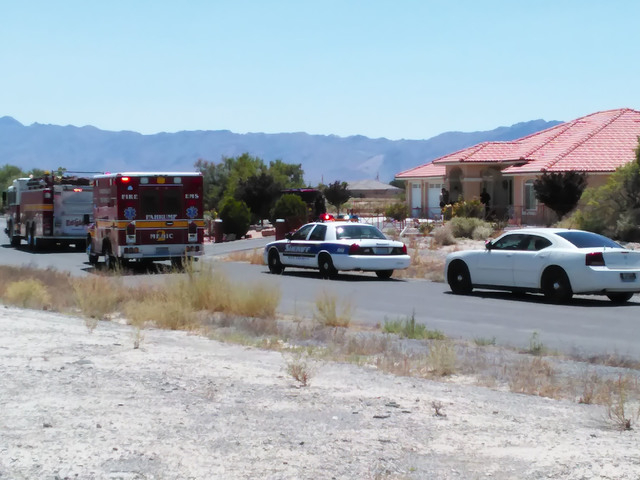
Pahrump Valley Fire and Rescue crews, along with Nye County Sheriff’s deputies, were dispatched to the intersection of Leslie and West Irene streets for a two-vehicle collision just before 1 p.m., last Wednesday.
Sheriff’s deputies are looking for the driver of one vehicle who fled the scene after colliding with the second vehicle.
“Upon arrival, we found one vehicle with four occupants inside, including a pregnant female,” Fire Chief Scott Lewis said. “All were evaluated at the scene and declined transport to the hospital.”
Upon their initial investigation, sheriff’s deputies discovered the fleeing vehicle’s license plate was left behind as a result of the collision. Nye County Sheriff’s deputies are following up on that lead.
On Monday afternoon, fire crews responded to the intersection of Pahrump Valley Boulevard and Highway 372 for a collision between a bicyclist and a vehicle.
The rider was transported to Desert View Hospital with undisclosed injuries, while the sheriff’s office is investigating the cause of the collision.
Later that day, emergency crews were dispatched to the 1600 block of Manzanita Street when a homeowner discovered a yellowish powdery substance in her mailbox.
“The substance had been removed out of the mailbox but a small sample was obtained and an analysis was completed where the substance was found to be benign,” Lewis said. “It was a yellow powdery substance and it is believed to be something similar to that of a dry chemical from a fire extinguisher. It was that type of consistency.”
While responding to recent service calls firefighters were challenged by temperatures upward of 112 degrees. Combined with their PPE’s (Personal Protection Equipment), including a helmet, hood, pants, coat, gloves, boots and an air pack, firefighters carry roughly 45 pounds of equipment.
At times, additional equipment such as a thermal-imaging camera, radios and a Halligan Bar, fire crews can carry up 75 additional pounds of equipment depending on the type of emergency response.
Lewis noted that his crews routinely keep a close watch on each other to minimize or avoid heat-related disorders.
During extreme situations, one method of cooling down consists of simply dousing the firefighter with cool water.
“If we start to see any signs and symptoms from any of our crew members, we immediately get them to shade and get some cold water on them,” he said. “We were very concerned during the course of that fatal structure fire on Sunday because temperatures were really starting to climb. The crews that we didn’t need on scene, went back to their respective stations. The crews that we maintained on location for the investigation, we rotated in and out of the apparatus so they could stay cool.”